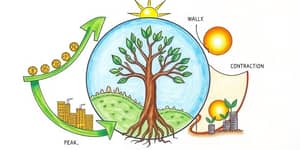
In mid-2025, philanthropy has reached unprecedented heights, proving that generosity and financial savvy can coexist in harmony.
This article unveils the latest data, tax strategies, and practical tactics to help you maximize both your personal wealth and social impact.
The momentum of giving continues: U.S. donations climbed to $592.5 billion in 2024, a 6.3% rise in current dollars and a 3.3% increase after inflation.
Individuals remain the cornerstone of generosity, contributing 67% of all gifts and driven by strong economic growth and stock market gains.
Typical giving patterns include a $121 average one-time donation and a $25 monthly gift, reflecting both spontaneous generosity and sustained commitment.
Major recipients of support are religion (27%), human services (14%), and education (13%), highlighting areas where private philanthropy makes critical differences.
Beyond the profound emotional rewards, charitable tax deductions unlock hidden value by reducing your taxable income and your overall tax liability.
Since the 2017 Tax Cuts and Jobs Act nearly doubled the standard deduction, strategic planning has become more important than ever.
To realize extra benefit from itemizing, your combined deductions must exceed these thresholds, making timing and method of giving essential components of tax planning.
Donors can generally deduct cash gifts to public charities up to 60% of AGI, with lower limits on appreciated assets and private foundation gifts.
Advanced tactics like bunching multiple years of donations into one tax year or using qualified charitable distributions through your IRA enable savers aged 70½ and older to direct up to $108,000 annually from an IRA to charity without counting as taxable income.
Employing these methods thoughtfully can transform generous impulses into lasting financial gains for both you and your chosen causes.
Philanthropy that marries intention with efficiency amplifies every dollar given and nurtures deeper engagement.
Workplace giving programs and corporate gift matching can supercharge the reach of every dollar, turning each personal contribution into a larger, collective investment.
Encourage supporters to opt into recurring monthly or quarterly giving plans, ensuring predictable revenue streams that help nonprofits plan for long-term projects.
Recognizing donors effectively sustains momentum. Consider tiered acknowledgments:
Friends ($100–$499): personalized thank-you note and impact report.
Believers ($500–$4,999): exclusive updates and VIP experiences.
Advocates ($5,000–$19,999): website spotlight and private briefings.
Visionaries ($20,000+): named opportunities and press recognition.
Global economic fluctuations and stock market swings continue to influence total giving levels, requiring nonprofits to remain agile.
With federal funding volatility in 2025, many organizations lean more heavily on private philanthropy to maintain services in health, education, and human services.
Shifts in donor demographics—particularly the increased influence of female and younger givers—combined with online platforms and social media have accelerated trends in digital and recurring giving.
International gifts now make up 33% of donor portfolios, reflecting a growing desire to address global challenges alongside local needs.
Effective fundraising appeals bridge the gap between data and human stories, connecting donors to real outcomes.
When appeals emphasize specific successes, donors feel a personal stake in continued progress, leading to higher retention and larger future gifts.
Charitable giving today is both a moral compass and a strategic tool for wealth management.
By leveraging current trends, tax incentives, and compelling storytelling, you can magnify your impact while enjoying measurable financial benefits.
As 2025 unfolds, let innovation, empathy, and smart planning guide your philanthropic journey toward a legacy of profound, sustainable change.
References













